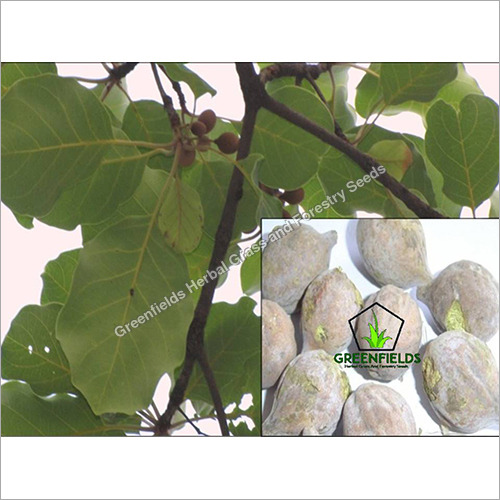
Baheda Medicinal Seeds Terminalia Belerica
Product Details:
- Type Other
- Storage Instructions other
- Click to View more
Baheda Medicinal Seeds Terminalia Belerica Price And Quantity
- 60 INR/Kilograms
- 5 Kilograms
Baheda Medicinal Seeds Terminalia Belerica Product Specifications
- other
- Other
Baheda Medicinal Seeds Terminalia Belerica Trade Information
- Others
- 500 Kilograms Per Year
- 5 Days
- PP bags
- All India
Product Description
Scientific Name: Terminalia belerica
Shape: oval
Size: 6-7cm
Color: Brownish green
Usage: Germination (not for oil extraction)
Age: Fresh(less than a year, good for germination)
Origin: India
Packing: 25,50 (P/P, Jute bags)
Category:- Medicinal / Herbal Seeds
Availability: Throughout the year
Details :
Common name: bastard myrobalanHindi Name : Bahera
Botanical name: Terminalia bellirica
Family: Fabaceae
Terminalia bellirica, known as Bahera or Beleric or bastard myrobalan, (Sanskrit: Vibhitaka ,Aksha), is a large deciduous tree common on plains and lower hills in Southeast Asia, where it is also grown as an avenue tree. The basionym is Myrobalanus bellirica William Roxburgh transferred M. bellirica to Terminalia as T. bellerica (Gaertn.) Roxb.. This spelling error is now widely used, causing confusion. The correct name is Terminalia bellirica .
The leaves are about 15 cm long and crowded toward the ends of the branches. It is considered a good fodder for cattle. Terminalia bellirica seeds have an oil content of 40%, whose fatty-acid methyl ester meets all of the major biodiesel requirements in the USA (ASTM D 6751-02, ASTM PS 121-99), Germany (DIN V 51606) and European Union (EN 14214). The seeds are called bedda nuts.
In traditional Indian Ayurvedic medicine, Beleric is known as Bibhitaki (Marathi: Behada) (Terminalia belerica) in its fruit form it is used in the popular Indian herbal rasayana treatment triphala. In Sanskrit it is called vibhdaka
According to Dymock, Warden, Hooper: Pharmacographia Indica 1890 :
This tree, in Sanskrit Vibhita and Vibhitaka (fearless), is avoided by the Hindus of Northern India, who will not sit in its shade, as it is supposed to be inhabited by demons. Two varieties of T. belerica are found in India, one with nearly globular fruit, 1/2 to 3/4 inch in diameter, the other with ovate and much larger fruit. The pulp of the fruit (Beleric myrobalan) is considered by Hindu physicians to be astringent and laxative, and is prescribed with salt and long pepper in affections of the throat and chest. As a constituent of the triphala (three fruits), i.e., emblic, beleric and chebulic myrobalans, it is employed in a great number of diseases, and the kernel is sometimes used as an external application to inflamed parts. On account of its medicinal properties the tree bears the Sanskrit synonym of Anila-ghnaka, or wind-killing. According to the Nighantas the kernels are narcotic.
This kernels are eaten by the Lodha people of the Indian subcontinent for their mind-altering qualities.The nuts of the tree are rounded but with five flatter sides. It seems to be these nuts that are used as dice in the epic poem Mahabharata. A handful of nuts would be cast on a gaming board and the players would have to call whether an odd or even number of nuts had been thrown. In the Nala, King Rituparna demonstrates his ability to count large numbers instantaneously by counting the number of nuts on an entire bough of a tree
Related product:
1.Shatavari white seeds
2 Ashwagandha seeds
3. Kalmegh seeds
4. Harra seeds
5. Gataran seeds
6. Amaltash seeds
7. Munga seeds.

 English
English Spanish
Spanish French
French German
German Italian
Italian Chinese (Simplified)
Chinese (Simplified) Japanese
Japanese Korean
Korean Arabic
Arabic Portuguese
Portuguese







